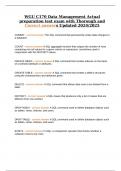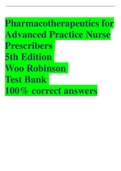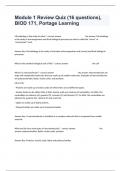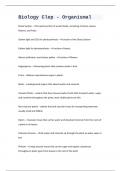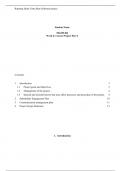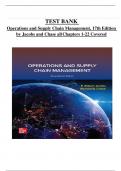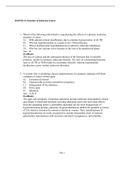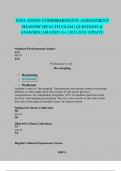Tentamen (uitwerkingen)
WGU C170 Data Management Actual preparation test exam with Thorough and Correct answers Updated 2024/2025
- Vak
- Instelling
WGU C170 Data Management Actual preparation test exam with Thorough and Correct answers Updated 2024/2025 COMMIT - correct answer The SQL command that permanently writes data changes to a database. COUNT - correct answer A SQL aggregate function that outputs the number of rows containing not ...
[Meer zien]
